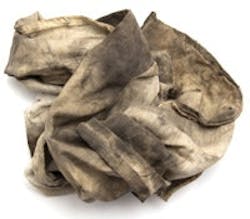EPA Wipes Away Rule
As one of the U.S. Environmental Protection Agency (EPA) Administrator Gina McCarthy’s first official acts, on July 23, 2013, the Administrator signed a final rule easing the requirements under the Resource Conservation and Recovery Act (RCRA) for solvent-contaminated rags and wipes. The rule has been long in the making and much anticipated.
EPA provides in the rule two conditional exemptions under RCRA for solvent-contaminated rags and wipes. The first excludes from the definition of solid waste solvent-contaminated wipes that are cleaned and reused (reusable wipes). The second excludes hazardous waste solvent-contaminated wipes that are disposed (disposable wipes).
EPA defines solvent-contaminated wipes to include wipes that, after use or after cleaning up a spill, either (1) contain one or more of the F001 through F005 solvents listed in 40 C.F.R. § 261.31 or the corresponding P- or U-listed solvents found in 40 C.F.R. § 261.33; (2) exhibit a hazardous characteristic found in 40 C.F.R. Part 261 Subpart C when that characteristic results from a solvent listed in 40 C.F.R. Part 261; and/or (3) exhibit only the hazardous waste characteristic of ignitability found in 40 C.F.R. § 261.21 due to the presence of one or more solvents that are not listed in 40 C.F.R. Part 261.
The rule will become effective six months after it’s published in the Federal Register. However, in the 48 states that the EPA has authorized to implement the RCRA program in lieu of the EPA, the rule won’t become effective until those states adopt it. Moreover, 45 states already have regulations governing the management of solvent-contaminated wipes and towels. As the EPA final rule is less stringent than existing EPA standards, states aren’t required to adopt the changes in the final rule.
Specifics of the Conditional Exclusions
The exclusions are applicable only to the solvent-contaminated wipes themselves. Free liquid spent solvent still would be considered solid waste and potentially subject to the hazardous waste regulations under RCRA upon removal from the solvent-contaminated wipe or from the container holding the wipes. In addition, the exclusions aren’t applicable to wipes that contain listed hazardous waste other than solvents, or exhibit the characteristic of toxicity, corrosivity, or reactivity due to contaminants other than solvents (such as metals). Furthermore, solvent-contaminated disposable wipes that are hazardous waste due to the presence of trichloroethylene aren’t eligible for the exclusion and remain subject to all applicable hazardous waste regulations.
Under the final rule, reusable and disposable solvent-contaminated wipes are excluded from regulation under RCRA Subtitle C, provided certain conditions are met. Specifically, both types of wipes, when accumulated, stored and transported, must be contained in non-leaking closed containers. The containers must be able to contain free liquids, should free liquids occur, and the containers must be labeled “Excluded Solvent- Contaminated Wipes.” The solvent-contaminated wipes may be accumulated by the generator for up to 180 days prior to being sent for cleaning or disposal. At the point of transport for cleaning or disposal, the wipes and their containers must contain no free liquids as determined by the Paint Filter Liquids Test (EPA Methods Test 9095B). Generators must maintain documentation that they are managing excluded solvent-contaminated wipes and keep that documentation at their sites.
Lastly, the wipes must be managed by one of the following types of facilities: (1) an industrial laundry or a dry cleaner that discharges effluent, if any, under Sections 301 and 402, or 307 of the Clean Water Act; (2) a municipal solid waste landfill that’s regulated under 40 C.F.R. Part 258, including § 258.40, or a hazardous waste landfill regulated under 40 C.F.R. Parts 264 or 265; or (3) a municipal waste combustor or other combustion facility that’s regulated under Section 129 of the Clean Air Act; a hazardous waste combustor regulated under 40 C.F.R. Parts 264 or 265; or a hazardous waste boiler or industrial furnace regulated under 40 C.F.R. Part 266 Subpart H.

